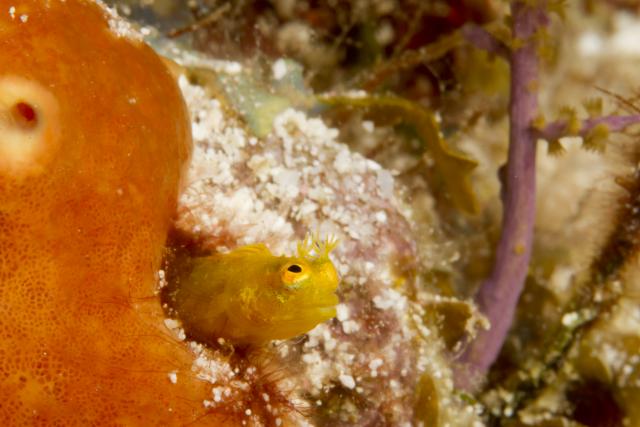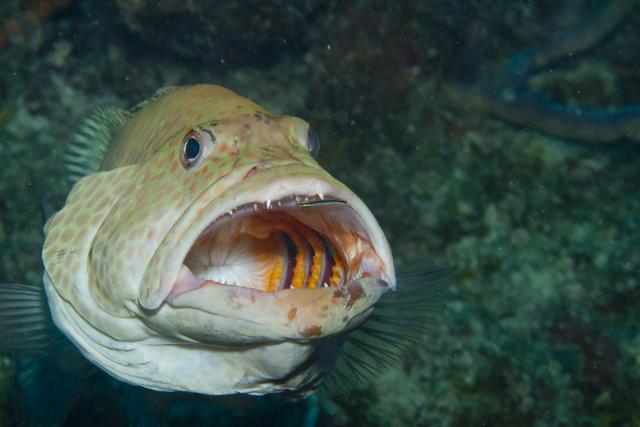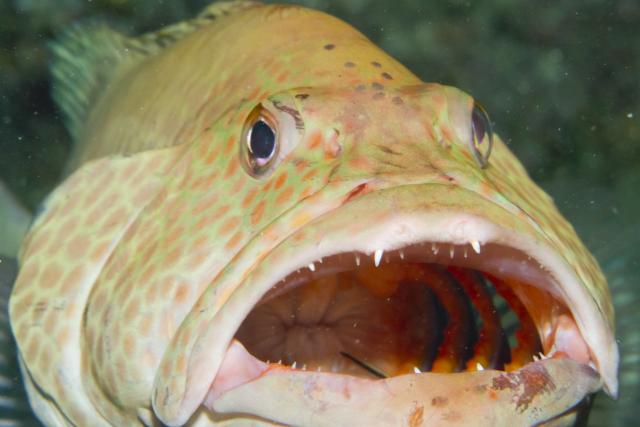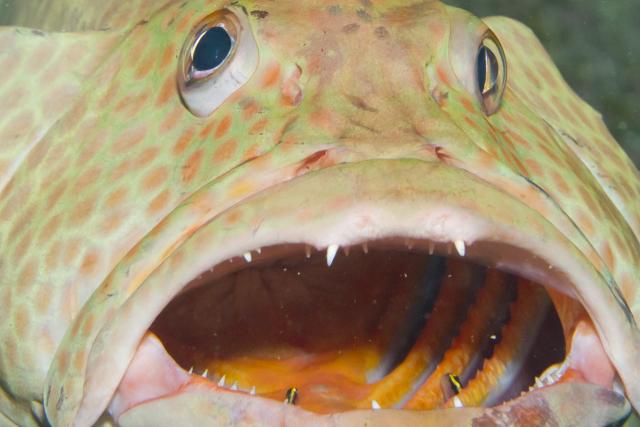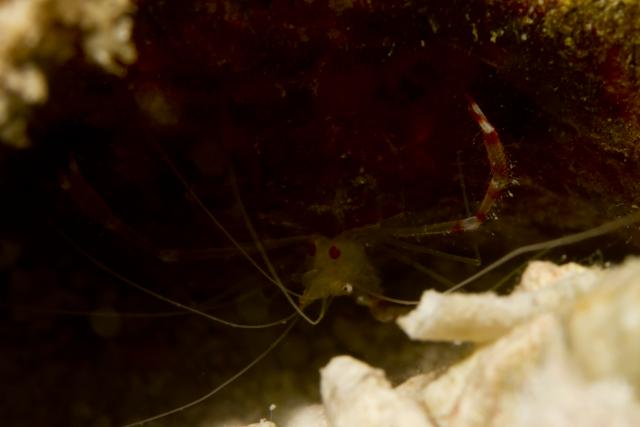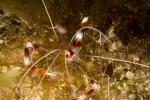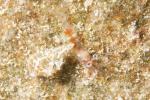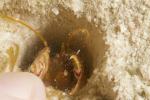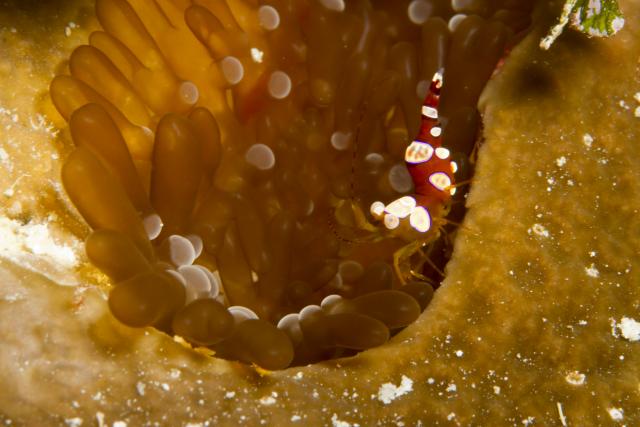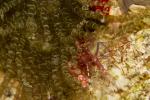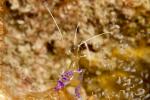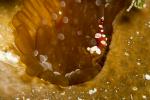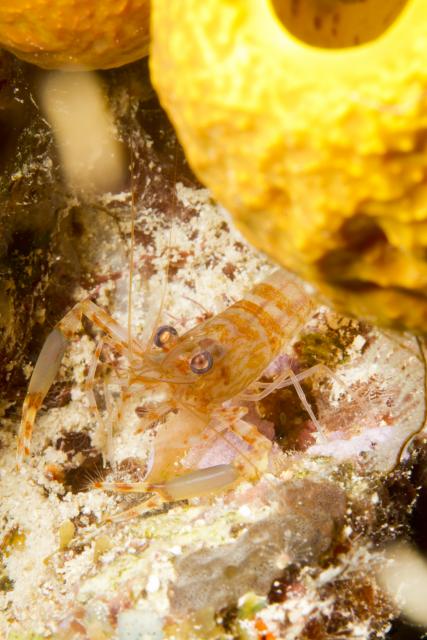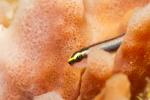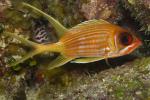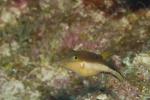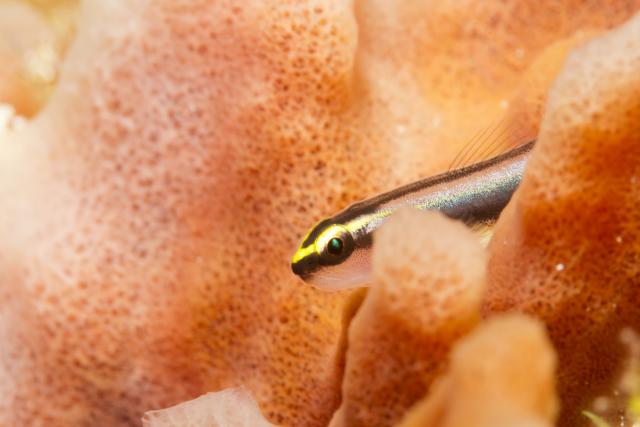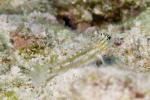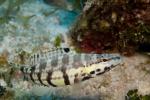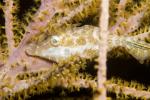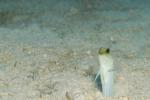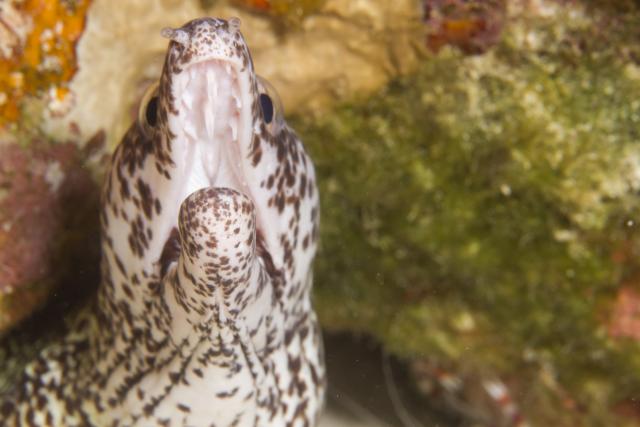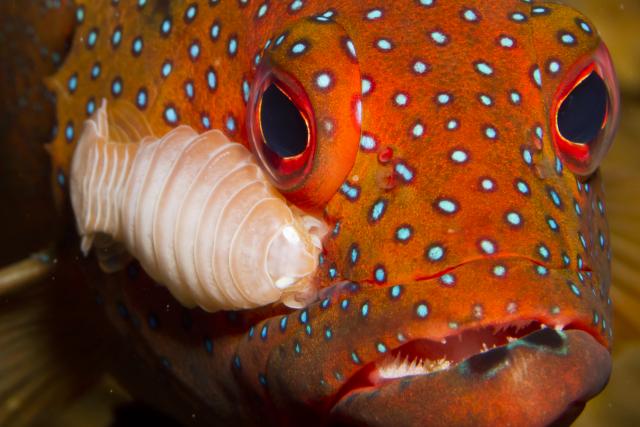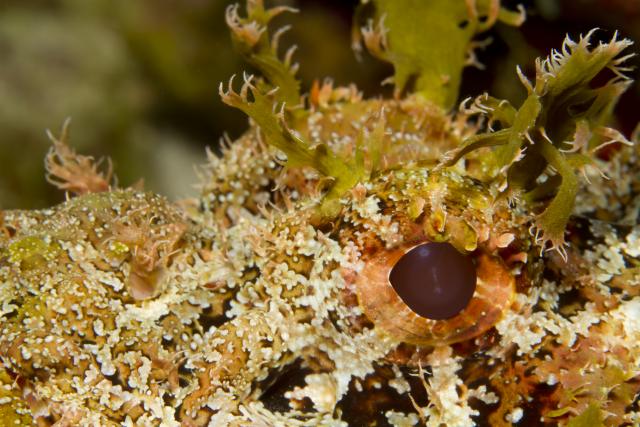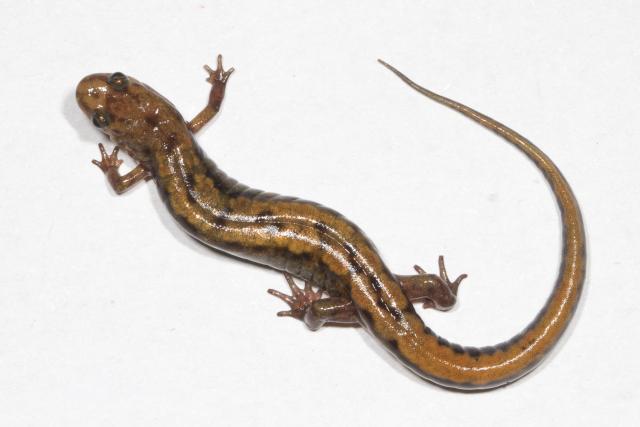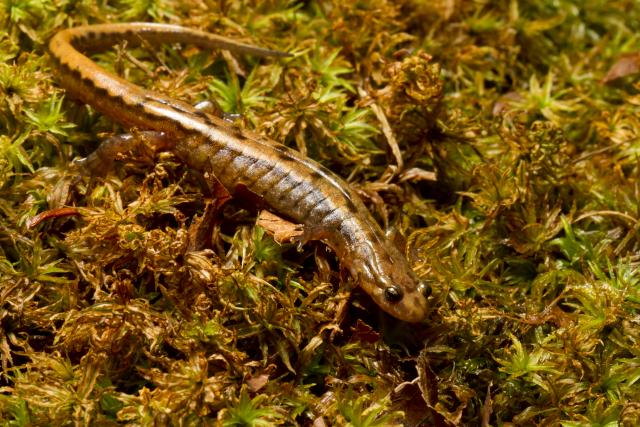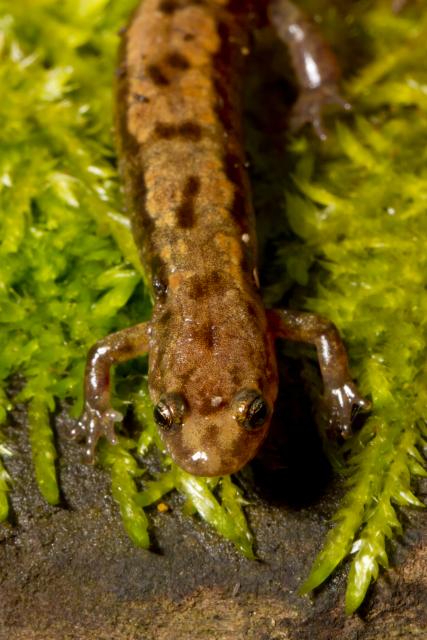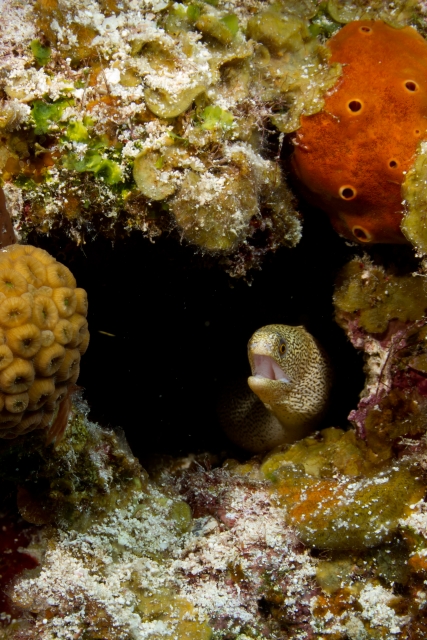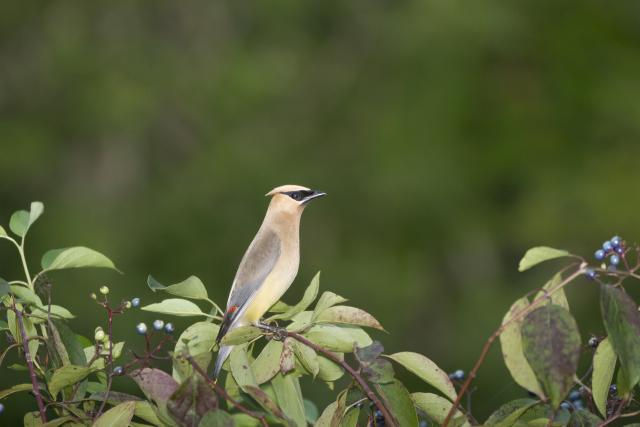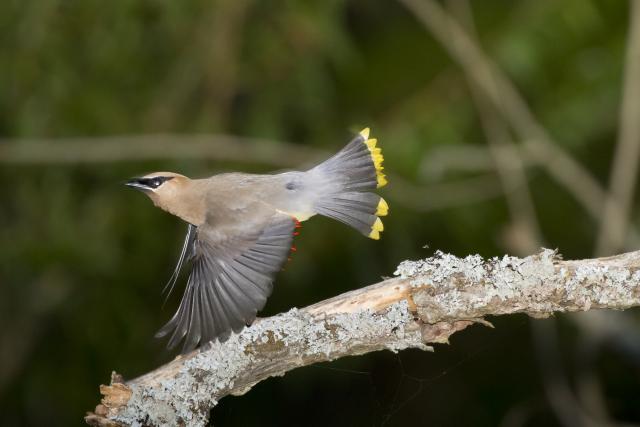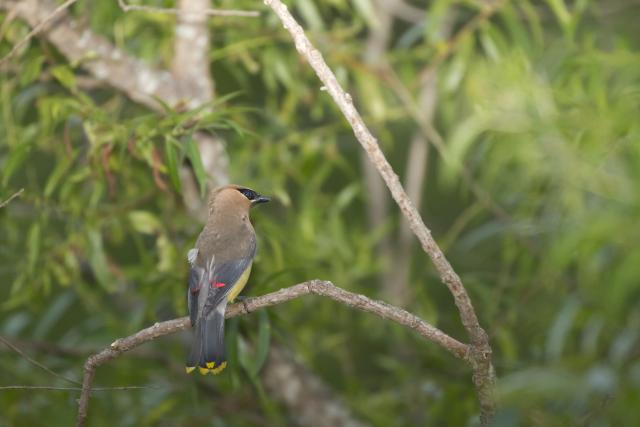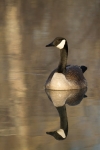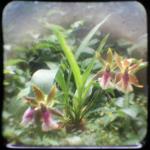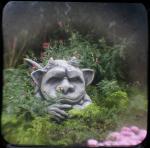flash
Turks and Caicos Explorer 2015: Roughhead Blenny
ktuli — Sun, 12/06/2015 - 17:35
Really?!? The weekend is over already???
This Roughhead Blenny (Acanthemblemaria aspera) shares my feelings on the approaching Monday too it seems...
Technical Data: Canon EOS 7D, Canon EF 100mm f/2.8L Macro IS USM, 1/200th sec at f/25. Image Stabilization on. ISO 400. Ikelite Housing and Port and Ikelite 161 Strobe in TTL Mode. Raw conversion in Photoshop CS5.
I need another vacation!
- Bill
Turks and Caicos Explorer 2015: Cleaning Goby and Graysby
ktuli — Thu, 12/03/2015 - 20:25
It is a dangerous job, but somebody's gotta do it!
At first glance, this photo might look like just a big fish with a big mouth showing off some teeth.
Well, truth be told, he is showing off those teeth, but not to the camera... Look a little closer...
Ok - if you didn't notice that little fish in the first shot, scroll back up and look for it - it is right on the bigger fish's upper lip. Now, I know it is blurry in this second shot, but see that stripe inside the fish's mouth, that's that little fish! So now you might be thinking he's a goner... but let's look a little closer still...
Now there are two of them in there!?!? What the heck is going on?
Technical Data: Canon EOS 7D, Canon EF 100mm f/2.8L Macro IS USM, 1/160th sec at f/16. Image Stabilization on. ISO 400. Ikelite Housing and Port and Ikelite 161 Strobe in TTL Mode. Raw conversion in Photoshop CS5.
Well, the big fish is a Graysby (Cephalopholis cruentatus) - they're in the grouper family, and the little fish are Cleaning Gobies (Elacatinus genie). While it may look like the Graysby is eating the tiny little Gobies, that couldn't be further from the truth. In fact, it is the gobies that are getting a bit to eat!
The little cleaning gobies provide a service to the other fish on the reef by eating parasites and removing stuck morsels of food that may have gotten stuck in teeth, jaws, and even between gills. There is an unwritten code that the gobies are safe to swim in and out of the bigger fish's mouth to provide this service, and they don't have to worry about getting swallowed up. Somehow the bigger fish manage to provide some sort of body language to the cleaning gobies to let them know they need some work, and the gobies know how to interpret the other fish to know when it is safe.
You can see this going on on the reef almost all day long, but it definitely seems more prevalent in the morning hours - maybe fish get morning breathe and this helps, I don't know... All I do know is that is it a very cool interaction between species and it is always fun to witness and photograph it during a dive.
I've shared some other photos of some Pederson's Cleaning shrimp providing the same service before.... perhaps next time I'll have to remember to get some video.
- Bill
Turks and Caicos Explorer 2015: Shrimp Platter
ktuli — Wed, 12/02/2015 - 19:39
Alright - if you've been following along with my dive photography, you'll probably know that shrimp are among my favorite underwater subjects. This trip provided me another batch of really great opportunities to photograph shrimp. For the most part, nothing too flash (sorry, I will be saving the crème de la crème of the shrimp from this trip for another post), but some good shots of some shrimp that have been elusive in the past and some new shrimp that I've never seen in the wild before (but have looked at in the ID book and wanted to find!).
First up is one of those shrimp I've always wanted to see, and oddly enough I didn't realize I had seen one when I took this photo. I thought I was photographing a Banded Coral Shrimp (there'll be a photo of one of them further down) because of how this little guy was hidden up under this coral. However, what we actually have here is a Golden Coral Shrimp (Stenopus scutellatus) - the dead give-away is that pair of red spots on its front. Unfortunately it isn't the best photograph, and had I known what I was looking at I would have spent more time with this subject (but it was actually on the very first dive of the week, and I was still a little over-excited just to be back in the water!).
Technical Data: Canon EOS 7D, Canon EF 100mm f/2.8L Macro IS USM, 1/200th sec at f/16. Image Stabilization on. ISO 400. Ikelite Housing and Port and Ikelite 161 Strobe in TTL Mode. Raw conversion in Photoshop CS5.
Next up is another shrimp that I've technically seen before, and I've gotten a really bad photograph of previously, and I technically only got photograph of its claws this time. It is an Orange Ghost Shrimp (Corallianassa longiventris) - with thanks to Andi for the updated version of the Reef Critter book for the ID - and it is quite the shrimp. Reading up on them now that I am home, I am wishing we had been more patient with them when we found them and tried to get them to come further out of their burrows for a better shot. Luckily, Mike figured out that they like to eat seaweed and was feeding the couple that we found which provided for the shots I did get...
Technical Data: Canon EOS 7D, Canon EF 100mm f/2.8L Macro IS USM, 1/160th sec at f/25. Image Stabilization on. ISO 400. Ikelite Housing and Port and Ikelite 161 Strobe in TTL Mode. Raw conversion in Photoshop CS5.
This last one was another I had seen in the book but was unimpressed with until I'd seen them in person. This shot below I captured on the first night dive of the week, and was really happy with the shot. Anya found me another one (well, technically she didn't know she found it for me, but I'll still give her credit) that I will share later as I have not yet processed the photos from that dive, but I am still happy with this shot and it certainly makes this shrimp look way cooler than it does in the ID book...
Technical Data: Canon EOS 7D, Canon EF 100mm f/2.8L Macro IS USM, 1/160th sec at f/25. Image Stabilization on. ISO 400. Ikelite Housing and Port and Ikelite 161 Strobe in TTL Mode. Raw conversion in Photoshop CS5.
In case you're wondering (and if you're still reading, I know that you are), that is apparently a Two Claw Shrimp (Brachycarpus biunguiculatus) - I know, I pretty non-descript name for a fairly cool looking shrimp. I'm thinking Big Claw Tiger Shrimp would be a better name, but I'm hoping that name is already taken for something else that looks even cooler and I'll get the chance to find that some day in the future!
- Bill
Turks and Caicos Explorer 2015: Fish Assortment 1
ktuli — Tue, 12/01/2015 - 19:19
Ok - we'll skip the chit-chat today and just get right to an assortment of fish portraits. Enjoy!
Mouseover the thumbnails to display the larger version.
Tune in tomorrow - I think I'll do a Shrimp Assortment!
- Bill
Turks and Caicos Explorer 2015: Impressive Teeth
ktuli — Sun, 11/29/2015 - 11:55
You might think that a post with the title of "Impressive Teeth" might be about a shark or perhaps even a baracuda, but no... these particular set of chompers belong to a "small-ish" eel.
Spotted Morays (Gymnothorax moringa) are pretty common on the reef, and they are often pretty bold and will hold their ground and allow a close approach, making for some nice close-up shots. They also need to continually force water over their gills by opening and closing their mouths which allows for a nice view of their impressive fangs. It might appear intimidating at first, but they are rarely aggressive.
Technical Data: Canon EOS 7D, Canon EF 100mm f/2.8L Macro IS USM, 1/160th sec at f/16. Image Stabilization on. ISO 400. Ikelite Housing and Port and Ikelite 161 Strobe in TTL Mode. Raw conversion in Photoshop CS5.
The most impressive things about their teeth? Notice that third row of teeth down the middle? They're the only animal that I know of that have those. They've meant to help them catch and hold fish. (Oh - and check out the bonus banded coral shrimp in the above shot).
Here's a slightly closer shot...
Technical Data: Canon EOS 7D, Canon EF 100mm f/2.8L Macro IS USM, 1/160th sec at f/16. Image Stabilization on. ISO 400. Ikelite Housing and Port and Ikelite 161 Strobe in TTL Mode. Raw conversion in Photoshop CS5.
- Bill
Turks and Caicos Explorer 2015: Coney and Isopod
ktuli — Wed, 11/25/2015 - 16:32
Ok - some folks (Anya included) will consider today's photo creepy or gross, but I still find it a fascinating part of the marine world.
This Coney (Cephalopholis fulva) has a Cymothoid Isopod (Anilocra sp.) attached to its face. What is most interesting is this is not a true parasite. The isopod does not actually feed on the tissue of the fish, but rather just hitches a ride and collects morsels of food that don't make it into the fish's mouth. Some fish will only have a single one of these hitchhikers on their face, while others have one on both sides. The single ones tend to be juveniles or females, while the unfortunate fish with two have a mated pair that will remain there for the remainder of their lifespans.
Technical Data: Canon EOS 7D, Canon EF 100mm f/2.8L Macro IS USM, 1/200th sec at f/16. Image Stabilization on. ISO 400. Ikelite Housing and Port and Ikelite 161 Strobe in TTL Mode. Raw conversion and cropped in Photoshop CS5 (mouseover for original).
While the book says that they don't harm the fish, you can definitely see how this one is starting to give this coney a bit of an "Elvis lip".
- Bill
Turks and Caicos Explorer 2015: First Peek
ktuli — Tue, 11/24/2015 - 19:16
Ok - so I haven't posted in a while, but I have a good reason... last week, Anya and I were on another dive trip aboard the Turks and Caicos Explorer II. This is our second time on this boat, and we had a great time. I've got plenty of cool stuff to share - including some things I've never seen before and some video courtesy of my GoPro which I had mounted on top of my SLR housing for most of the dives!
I surprised myself by quickly identifying a rather cryptic and expertly camouflaged fish very early on during our first dive. This Spotted Scorpionfish (Scorpaena plumieri) blended almost perfectly into the reef. Unfortunately, in my excitement, I neglected to capture a full body shot and instead focused in on the fleshy appendages that help to camouflage the fish.
Technical Data: Canon EOS 7D, Canon EF 100mm f/2.8L Macro IS USM, 1/200th sec at f/16. Image Stabilization on. ISO 400. Ikelite Housing and Port and Ikelite 161 Strobe in TTL Mode. Raw conversion in Photoshop CS5.
I'm going to try and get through the photos as quickly as possible, but it likely will take a while. Honestly, I usually come home pretty exhausted from dive trips, and I've been finding myself yawning quite a bit since we got home. And speaking of which, I did manage to capture a shot of this scorpion fish "yawning" - it isn't the best shot, but it does show the cool bright yellow color that is hidden inside their lips. Fish "yawns" are one of those things that are just cool to get photos of, but are pretty challenging to get. This being my first one, I'm pretty pleased with it...
Technical Data: Canon EOS 7D, Canon EF 100mm f/2.8L Macro IS USM, 1/200th sec at f/16. Image Stabilization on. ISO 400. Ikelite Housing and Port and Ikelite 161 Strobe in TTL Mode. Raw conversion in Photoshop CS5.
Like I said, I've got plenty of good stuff to share, so stop back regularly for more photos from this trip!
- Bill
Northern Dusky Salamaner
ktuli — Sun, 10/25/2015 - 18:13
Found this little guy on the train this morning... It is a Northern Dusky Salamander (Desmognathus fuscus fuscus).
Technical Data: Canon EOS 7D, Canon EF 100mm f/2.8L Macro IS USM, 1/250th sec at f/22. Canon Macro Twin Lite MT-24EX in ETTL mode. ISO 100. RAW processing and cropped in Adobe Camera Raw.
Technical Data: Canon EOS 7D, Canon EF 100mm f/2.8L Macro IS USM, 1/160 sec at f/22. Image Stabilization on. ISO 100. Canon Speedlight 580EX II flash in eTTL mode and bounced through an ExpoImaging Rogue Flashbender. RAW processing in Adobe Camera Raw.
Technical Data: Canon EOS 7D, Canon EF 100mm f/2.8L Macro IS USM, 1/160 sec at f/16. Image Stabilization on. ISO 100. Canon Speedlight 580EX II flash in eTTL mode and bounced through an ExpoImaging Rogue Flashbender. RAW processing and cropped in Adobe Camera Raw.
- Bill
Turks and Caicos Explorer: Goldentail Moray
ktuli — Tue, 10/06/2015 - 16:25
I need to go diving.
Technical Data: Canon EOS 7D, Canon EF-S 18-55mm f/3.5-5.6 II at 53mm. 1/120 sec at f/14. ISO 160. Ikelite Housing and Port with dual Ikelite 161 Strobes in eTTL mode. Raw conversion and cropped in Adobe Camera Raw
If you're curious, that is a Goldentail Moray (Gymnothorax miliaris) from a trip we took to the Turks and Caicos a couple years ago.
- Bill
Cedar Waxwings
ktuli — Thu, 10/01/2015 - 17:22
So we technically should still see Cedar Waxwings in the winter, but it seems like the group that we had been seeing on a regular basis have moved on. They would come visit our pond just around sunset every night, so getting good sharp photographs was always a challenge.
Technical Data: Canon EOS 7D, Canon EF 100-400mm f/4.5-5.6L IS II USM at 400mm, 1/250 sec at f/5.6. ISO 2500. IS Mode 1. Canon Speedlight 580EX II flash in auto mode plus Better Beamer. RAW processing in Adobe Camera Raw.
They usually didn't stop for very long, so I eventually decided to add my flash and Better Beamer. After a bit of that, I decided to see if I could catch one in flight...
Technical Data: Canon EOS 7D, Canon EF 100-400mm f/4.5-5.6L IS II USM at 400mm, 1/160 sec at f/6.3. ISO 1600. IS Mode 1. Canon Speedlight 580EX II flash in auto mode plus Better Beamer. RAW processing and cropped in Adobe Camera Raw.
I wish I would have used 1/250th of a second exposure on that to eliminate/reduce the motion blur more, but I'll have to try that next time...
Technical Data: Canon EOS 7D, Canon EF 100-400mm f/4.5-5.6L IS II USM at 400mm, 1/250 sec at f/5.6. ISO 2500. IS Mode 1. Canon Speedlight 580EX II flash in auto mode plus Better Beamer. RAW processing in Adobe Camera Raw.
- Bill

